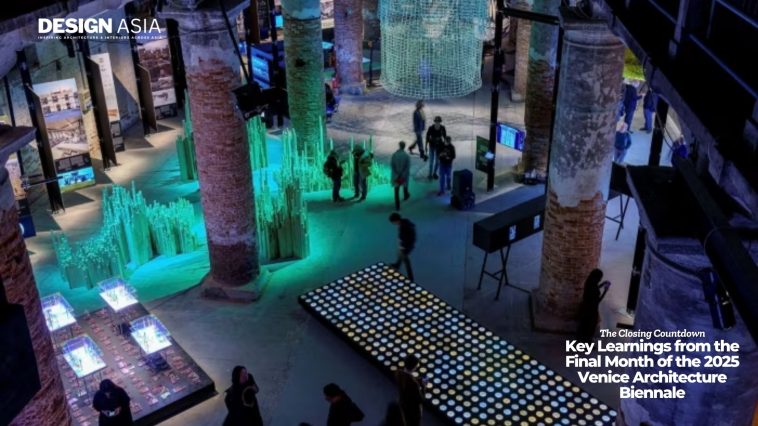As the 2025 Venice Architecture Biennale enters its last weeks, it’s time to distill its most powerful lessons. This year’s theme, curated by Carlo Ratti—“Intelligens. Natural. Artificial. Collective.”—transforms Venice into a living experiment where architecture faces the urgent realities of climate adaptation, circularity, and social repair.
What the Biennale’s Theme Really Means
Ratti’s laboratory-like curation brings together over 750 contributors who blend ecological processes, AI, and community wisdom. Instead of static design, it’s about adaptive solutions—how buildings and cities can respond to floods, fires, and heat waves with intelligence that is not just technological, but also natural and collective.
Priorities in the Final Month
With closure set for November 23, visitors should focus on national pavilions and exhibitions that model passive cooling, material circularity, and repair. Guided tours and education programs help distill these dense, prototype-filled displays into actionable insights for home and practice.
Climate Adaptation as Design’s New Frontier
Highlights like Bahrain’s “Heatwave” pavilion showcase how locally rooted passive cooling outperforms energy-intensive fixes, reframing vernacular wisdom as high-tech climate strategy. Across the Biennale, most projects treat adaptation as the new edge—favoring prototypes and open-source methods over flashy visuals.
Meaningful Applications of AI
Here, AI isn’t about novelty—it’s a tool for environmental sensing, resource mapping, and reuse workflows. The Biennale’s message is clear: AI must fuse with ecological models and community governance to support truly resilient environments.
Collective Intelligence at Work
National pavilions stress repair, maintenance, and housing innovation, elevating communal processes and local partnerships above form-driven spectacle. The best exhibits show how cross-disciplinary collaborations—architects joining with scientists, activists, and artisans—are essential for lasting change.
Circular Systems and Material Innovation
Installations demonstrate circular principles with bio-based materials, reversible connections, and reuse strategies. The shift is from objects to systems, enabling policy and logistics for circularity in practice.
Navigating the Biennale’s Rich Density
With 65 pavilions and 750+ participants, make your closing-month visit goal-driven. Build a route focusing on themes like cooling, repair, and reuse. Giardini offers national overviews, Arsenale features prototypes and collaborations—both sites reward targeted exploration.
Critiques and Takeaways
While the scale is vast, impactful pavilions stand out by rooting high-level concepts in real materials, climate, and community needs. The lesson: focus on clarity and local context—not grand narratives.
How to Make Your Last Visit Count:
- Check final hours and plan visits to Giardini and Arsenale on separate days.
- Arrive with three core questions—how to cool, repair, and reuse—and seek concrete answers across 6–8 exhibits per day.
- Capture details for future reference and networking.
After Venice: An Action Checklist
- Pilot passive cooling approaches validated in “Heatwave.”
- Build circular design workflows from reversible and reused material displays.
- Leverage AI for adaptive microclimate and inventory analytics.
- Embed collective processes—maintenance, tenant input, craft partnerships—into every project.
Ultimately, the Venice Architecture Biennale 2025 challenges architects and designers everywhere to prototype, test, and implement adaptive, intelligent systems. From the final month’s density, take home not just inspiration, but a toolkit for meaningful change in your own city.


